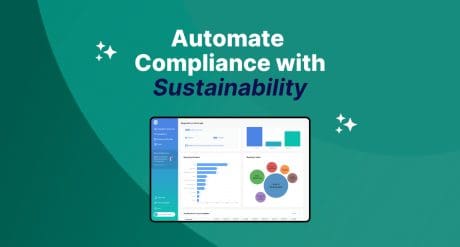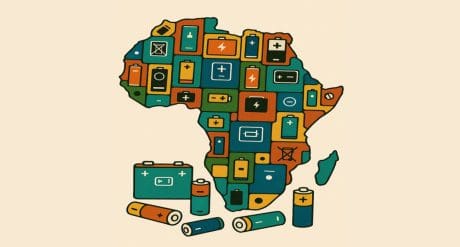
What’s Trending In Compliance? (January 2023)

At Compliance & Risks we help manufacturers, retailers and their supply chain partners to monitor and manage global regulations via C2P, our compliance knowledge management platform.
These are some of the top trending compliance topics that generated the most interest globally for January.
1. France: Circular Economy Information to be Reported from Extended Producer Responsibility Sectors, Order, December 2022
The Circular Economy Law No. 2020-10 introduced a number of articles to the environment code that require the Extended Producer Responsibility (EPR) sectors to report various information.
More specifically, Articles L. 541-10-13 and L. 541-10-14 of the environment code require producers of the products subject to EPR under L 541-10 (for example EEE, batteries, textiles, packaging etc.) to annually send information to the French Environment and Energy Management Agency (ADEME).
Article L. 541-15-2 (also introduced through the Circular Economy Law) provides that the eco-organizations or individual producer schemes must annually send information on their activities to the competent authority responsible for the development and monitoring of the regional plan for the prevention and management of waste (PRPGD) or the regional planning, sustainable development and territorial equality plan (SRADDET).
The objective of this Order is set out the detailed information to be reported by producers and eco-organisations for each of their sectors subject to EPR.
The information must be sent by 30 April annually to ADEME and by 30 June annually to the competent authorities responsible for development and monitoring of the PRPGD or SRADDET.
It also lists the information that will be made available to the public by ADEME, as well as by the eco-organisations.
The Order contains 15 annexes which detail by EPR product sector the information that must be sent.
This Order repeals a number of specific decrees containing provisions relating to previous information to be reported for each EPR sector.
Producers who market small quantities of products, and who benefit from paying a financial contribution in the form of a flat rate pursuant to the last paragraph of Article R. 541-119, are eligible for a simplified declaration.
This Order entered into force on 15 December 2022.
2. Switzerland: Energy Efficiency Requirements for Installations, Vehicles and Equipment, Ordinance, November 2017 – Amendment – (on stricter minimum energy performance standards (MEPS); transition periods for compliance with ecodesign requirements) Ordinance, 2022
On 23 November 2022, the Swiss Federal Council adopted an Ordinance amending the Ordinance on Energy Efficiency Requirements for Installations, Vehicles and Equipment (OEEE) of 1st November 2017.
The following changes are made to the Annexes of the Energy Efficiency Requirements Ordinance:
The following appliances and types of products put into circulation must comply with the updated energy efficiency requirements:
- Refrigeration appliances;
- Washing machines and dryers;
- Tumble dryers;
- Household dishwashers;
- Electronic displays;
- Water heaters and hot water storage tanks;
- Space Heaters;
- Light sources;
- Separate Control Gear;
- Commercial Cooktops and Deep Fryers;
- Household Coffee Machines;
- Passenger Cars, Vans and Light articulated Vehicles.
Some of the new energy efficiency requirements refer to updated EU Regulations on Energy Efficiency while for others, the Ordinance sets its own requirements that exceed the European requirements.
The new energy efficiency requirements are applicable from 1 January 2024.
Products that do not comply with the specified energy efficiency requirements may not be put into circulation or supplied in Switzerland after 31 December 2024.
For certain appliances, requirements in addition to the energy efficiency requirements are applicable.
This mainly concerns the mandatory energy labeling of mains-operated household coffee machines, passenger cars, vans and light articulated vehicles.
Setting stricter energy efficiency requirements than the requirements set by the European Union creates a technical barrier to trade.
In order to allow for this barrier, the Ordinance of 19 May 2010 on the placing on the market of products in accordance with foreign regulations must be amended by adding the products with stricter requirements to the list of products that have different requirements than the EU requirements.
The Ordinance enters into force on 1 January 2023.
3. Turkey: Restriction of the Use of Certain Hazardous Substances in Electrical and Electronic Equipment, Regulation, December 2022
On 26 December 2022, the Turkish Ministry of Environment, Urbanization and Climate Change published a Regulation on the restriction of the use of certain hazardous substances in electrical and electronic equipment (“EEE”) for consultation.
The Regulation is modelled on the RoHS II Directives (2011/65/EU and 2017/2102/EU).
The Regulation will apply to EEE falling within the categories specified in Annex 1.
Item 11 in Annex 1 extends the scope of the regulation to electrical an electronic goods not covered in any of the 10 categories.
Excluded from the scope are certain categories of products listed in Article 2 of the Regulation.
As per Article 5, EEE placed on the market, including cables and spare parts, cannot have restricted substances in concentrations exceeding the maximum values defined in Annex 2.
There are exemptions provided for certain applications detailed in Annexes 3 and 4; and Article 6 notes that these will be further updated in line with the changes in the EU legislation.
The date of application of restrictions with regard to medical devices, in vitro diagnostics medical devices, monitoring and control instruments (including industrial) and all other EEE not included in the 2012 Regulation but covered by the this Regulation is 1 January 2024.
Manufacturers shall prepare technical files in conformity with the 2021 Regulation on Conformity Assessment Procedures and ensure internal production control is carried out. For compliant EEE the EU Declaration of Conformity (detailed in Annex 5) is drawn up and the CE mark is affixed.
The manufacturer should retain the product technical file and the declaration of conformity for 10 years after placing the EEE on the market.
It should be noted that, with regard to the obligation of the manufacturer to share his contact information this must be provided in Turkish, or easily understandable by end users and accepted by the market surveillance agency.
In case the EU Declaration of Conformity is issued in other languages, its Turkish translation is also attached to the declaration. In the EU Declaration of Conformity, reference is made to the name, publication date and number of all the legislation complied with.
The “CE” mark should be affixed to each EEE or data plate or the structure of the EEE.
In cases where this is not possible or its permanence cannot be guaranteed, it should be placed on the packaging or accompanying documents in a visible, legible and indelible way.
The “CE” mark should be affixed before the EEE is placed on the market.
Materials, components and EEE on which tests and measurements demonstrating compliance with the requirements have been performed, or which have been assessed, in accordance with harmonised standards, the references of which have been published in the Official Journal of the European Union, or the corresponding harmonised Turkish Standards, shall be presumed to comply with the requirements of the Regulation.
The regulation will enter into force on 1 February 2023, however the provisions on EU Declaration of Conformity and “CE” marking will apply from 1 January 2024 and Article 5(4) will also come into force on the same date.
4. Spain: Packaging and Packaging Waste, Royal Decree No. 1055/2022
On 27 December 2022, the Spanish Ministry for Ecological Transition and the Demographic Challenge published Real-Decree No 1055 on Packaging and Packaging Waste.
This decree establishes the legal regime applicable to packaging and packaging waste with the aim of preventing and reducing its impact on the environment throughout its life cycle.
It also lays down measures aiming to prevent the production of packaging waste, reuse and recycling of packaging and other forms of recovery of packaging waste and, consequently, reduce the final disposal of packaging waste, including the presence of packaging waste in the environment, in order to focus on a transition to a more environmentally friendly contribute to the transition towards a circular economy.
All packaging placed on the market, as well as its residues, regardless of their material or whether they are used or produced in industry, commerce, offices, commercial establishments, services, residences or any other place, are included in the scope of this Royal Decree.
This Royal Decree entered into force on 29.12.2022 and the new marking obligations provided for in Article 13 will apply from 1 January 2025.
5. Italy: Introduction of the Plastic Tax, Law No. 160/2019 – Amendment – (on postponement of the plastic tax until 2024) Law No. 197/2022
On 29 December 2022, the Italian President published the Budget Law for 2023 and multi-year budget for the three-year period 2023-2025.
The tax on the consumption of single-use plastic products was established by Law No. 160 of 27 December 2019 (Budget Law 2020) which in Article 1, paragraphs 634-658, established the application rules.
The entry into force of the plastic tax has been postponed several times, the Budget Law for 2023 further postpones the date of application of the plastic tax to 1 January 2024 instead of 1 January 2023
Stay Updated On Global Regulations
This information is based on the most viewed regulations on C2P this month. If you would like to find out more about how you can stay on top of global regulations, why don’t you Book a Demo with our team today?
Book Time With Our Team
Learn how C2P can help you stay ahead of regulatory changes and achieve uninterrupted market access.








